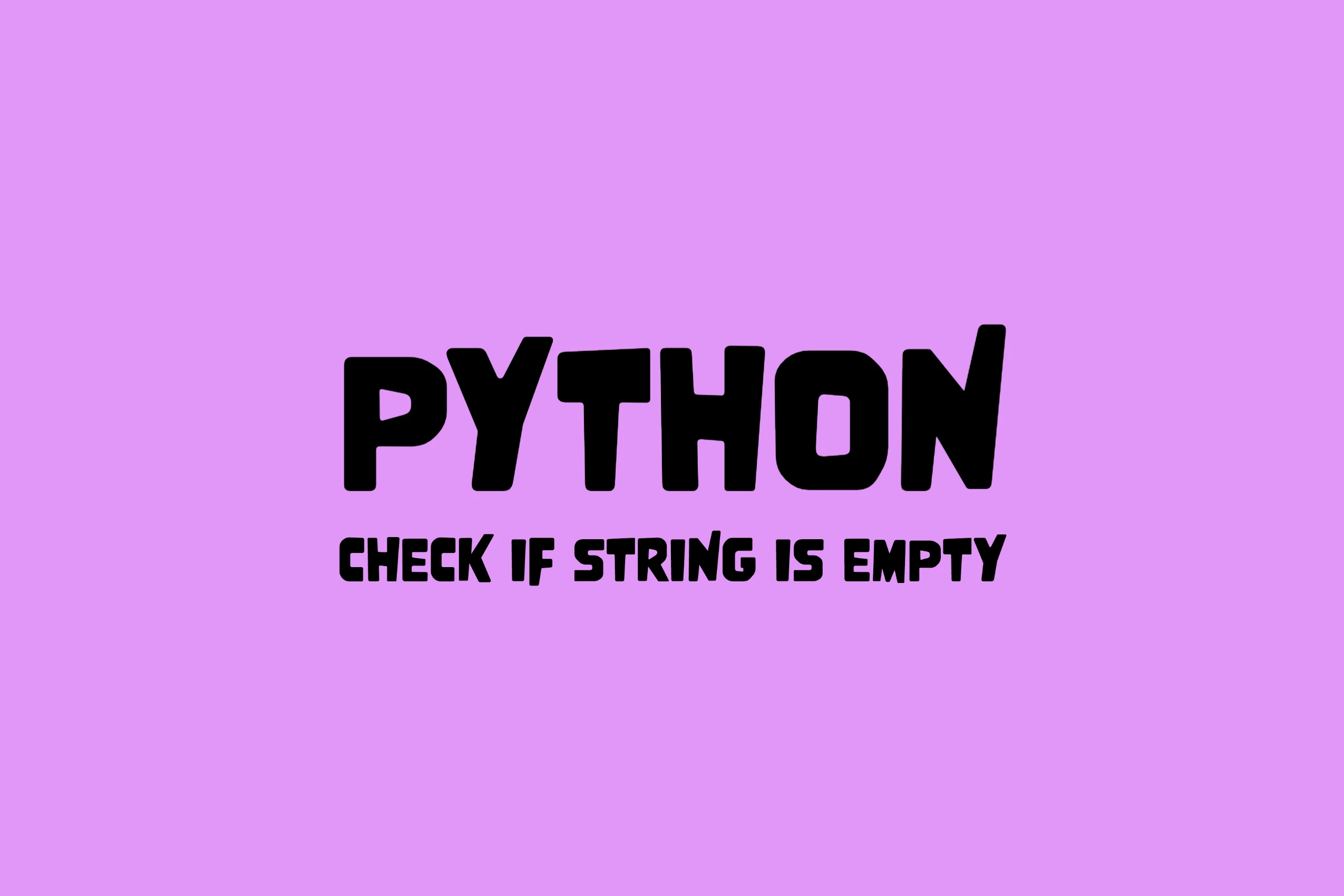Kodeclik Blog
How to check for an empty string in Python
In your Python journey you will come across a scenario where you will need to test if a given Python string is empty. For instance, you could be getting input from a user (e.g., asking the user for his or her name) and want to check for an empty input (i.e., the user just pressing Enter without typing anything). Let us see how to check if a Python string is empty!

There are three ways to check if a Python string is empty. First, you can check for equality to the empty string. Second, you can use the len() function and see if it returns a zero. Finally, you can evaluate the string in a conditional context and use the fact that empty strings will evaluate to false.
Method 1: Check for equality to the empty string
Here is a simple program that checks for an empty string by testing for equality to the empty string:
name = input("Please enter your name: ")
if (name == ""):
print ("You entered an empty string!")
else:
print("Hi " + name + "!")In the program above, we first obtain input from the user and store it in the variable called “name”. Then we check if “name” is empty by comparing it to “”. If it is empty, we print a useful message. Else, we create a greeting message.
Here is a sample run where we just press the Enter key when prompted (thus making “name” to be an empty string):
Please enter your name:
You entered an empty string!Let us try entering a name when prompted:
Please enter your name: Kodeclik
Hi Kodeclik!Note that for your input to be counted as an empty string, you need to press just Enter. Pressing a space key for instance does not constitute an empty string. Here is what happens when we do that:
Please enter your name:
Hi !It prints a “Hi” with a space and an exclamation point.
Method 2: Use the len() function to check for an empty string
The second way to check if a string is empty is to apply the len() function on the string. If the length is zero, then it is an empty string.
Let us modify our program above to use len():
name = input("Please enter your name: ")
if (len(name) == 0):
print ("You entered an empty string!")
else:
print("Hi " + name + "!")This program works exactly the same as the previous program. Here are three separate runs to illustrate the idea:
Please enter your name: John
Hi John!
Please enter your name:
You entered an empty string!
Please enter your name:
Hi !Method 3: Evaluate the string in a conditional context
The third approach to check if a string is empty is to evaluate it in a conditional context. An empty string will always evaluate to False. Any non-empty string will evaluate to True. With this observation, we modify our program as:
name = input("Please enter your name: ")
if (not name):
print ("You entered an empty string!")
else:
print("Hi " + name + "!")Here, we are checking if name is empty by evaluating “not name” inside the if clause. If the string is empty, then “name” will evaluate to False, so that (not name) will evaluate to True and thus the message that the string is empty will be printed.
Here are three runs of our program as before:
Please enter your name: Stacy
Hi Stacy!
Please enter your name:
You entered an empty string!
Please enter your name:
Hi !We have seen three different ways to check if a string is empty in Python. Which is your favorite?
If you liked this blogpost, learn how to convert a Python comma-separated string into a list, and how strings are internally represented as sequences of bytes in Python. Also learn about CamelCase notation and how to detect in Python if a given string is in CamelCase.
For more Python content, checkout the math.ceil() and math.floor() functions! Also
learn about the math domain error in Python and how to fix it!
Interested in more things Python? Checkout our post on Python queues. Also see our blogpost on Python's enumerate() capability. Also if you like Python+math content, see our blogpost on Magic Squares. Finally, master the Python print function!
Want to learn Python with us? Sign up for 1:1 or small group classes.